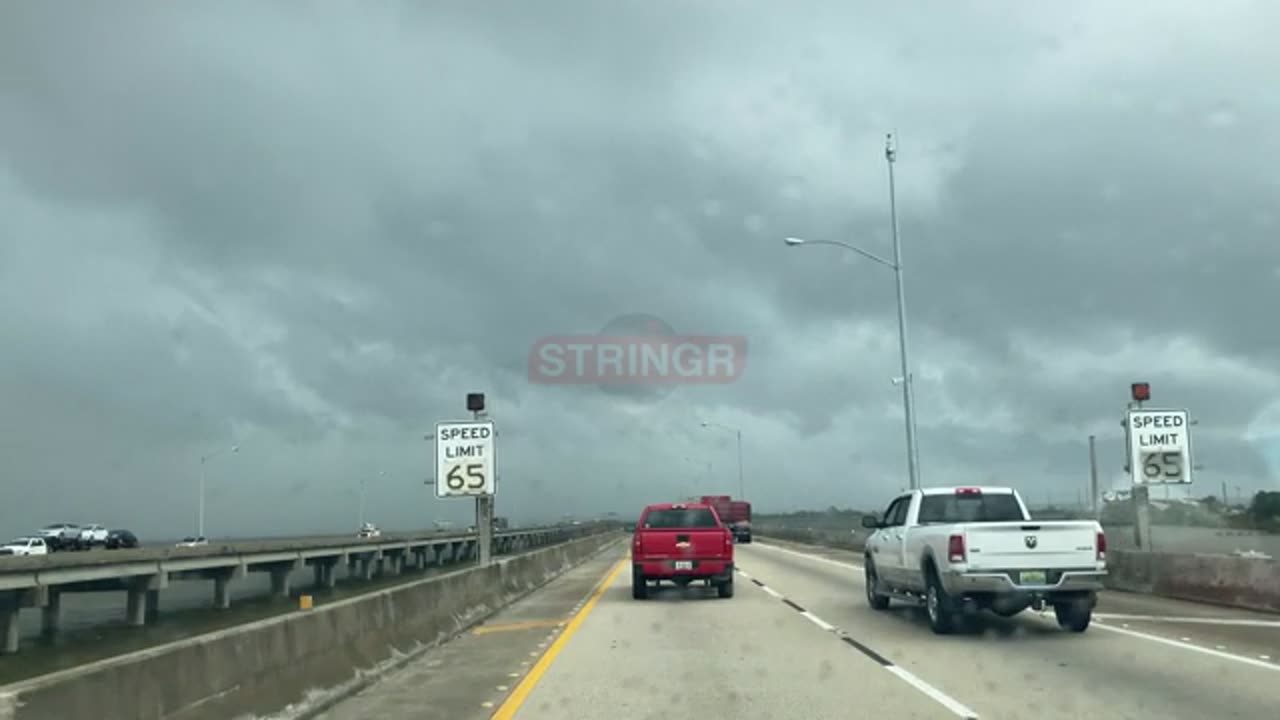Premium Only Content

Driving Across Mobile Bay In Hurricane Zeta
## Hurricane Zeta's Devastating Path: Widespread Destruction in the Wake of the Storm's Fury
In a relentless display of nature's fury, Hurricane Zeta carved a path of destruction as it made landfall in Louisiana and churned its way through the Gulf Coast, leaving a trail of upended lives and battered landscapes. The storm's impact was keenly felt in Alabama, where the force of Zeta's winds and the specter of its rapid movement tested the resilience of communities already grappling with the challenges of 2020.
Zeta's journey began in the Western Caribbean Sea, where it rapidly gained strength, evolving into a potent tropical storm on Saturday, October 24, 2020. Slowly advancing westward, it first struck the Yucatan Peninsula, unleashing its force from late Monday, October 26, through the 27th. Emerging into the Southern Gulf of Mexico on Tuesday, October 27th, Zeta took a turn towards a new and menacing destiny.
As if choreographed by an uncanny mix of atmospheric elements, Zeta veered northwest and transformed into a hurricane on Wednesday, October 28th. The orchestrators behind this path were an approaching upper-level low and a sweeping cold front making their presence felt across the Southern Plains. The atmospheric ballet guided Zeta northeastward into Alabama, a trajectory set to test the mettle of the state's emergency response teams and communities.
Despite facing marginal sea-surface temperatures and increasing wind shear, Zeta's velocity acted as its shield, staving off significant weakening. This relentless motion set the stage for the storm's landfall in southeast Louisiana late Wednesday, a harbinger of the chaos to come.
By the time Zeta reached Alabama's borders, its power remained ominously intact. While it had diminished to a tropical storm, its winds remained formidable, leading to widespread gusts exceeding 40-50 mph and, in some locations, reaching an astonishing 50-70 mph. The impact was immediate and devastating—trees were uprooted, power lines were brought down, and infrastructure lay strewn across affected areas like wreckage after a battle.
The storm's potency was further evidenced by the staggering number of power outages reported by Alabama Power, with an astonishing 494,000 outages across the state. The relentless wind was the culprit behind this turmoil, as its fury radiated from the eyewall's center and extended southeastwards, leaving chaos and uncertainty in its wake. Fortunately, no tornadoes accompanied Zeta's rampage, sparing the region from another layer of destruction.
As Zeta barreled through, it left behind a watery calling card, with rainfall totals ranging from 2-5 inches. However, areas south of Interstate 85 received less than an inch, underscoring the storm's asymmetrical impact. Despite the overwhelming force of the winds, the lack of tornadoes provided a modicum of relief to communities grappling with the aftermath.
Meteorologist Jeff Masters pointed out that Zeta's assault marked the fifth time a named tropical storm or hurricane had struck Louisiana in the year 2020—a testament to the Gulf Coast's vulnerability to nature's wrath. Furthermore, this marked the eleventh instance of a named storm making landfall in the continental United States in 2020, an unprecedented figure since nine storms made landfall in 1916.
NASA's vigilant satellites captured Zeta's advance, revealing the storm's massive scale and formidable strength. The vivid imagery serves as a chilling reminder of the immense power nature can wield and the urgency with which communities must respond to mitigate the destruction.
The National Hurricane Center's warnings bore grim testimony to Zeta's impending menace. As it approached the coast, hurricane and storm surge warnings stretched from Louisiana to the border of Mississippi and Alabama, while storm surges of 5 to 9 feet were anticipated in vulnerable areas. The storm's rapid pace tempered expectations of extreme rainfall accumulation, a small consolation amidst the widespread chaos.
Hurricane Zeta's ferocity was not confined to the United States, as it had already delivered a blow to Mexico's Yucatan Peninsula, a region hit by a trio of tropical storms or hurricanes within a single month. Though not as deadly as feared, the Yucatan still bore the brunt of Zeta's impact, with downed trees and power lines bearing witness to the storm's power.
As Hurricane Zeta's rampage comes to an end, communities from Louisiana to Alabama are left with the unenviable task of rebuilding and recovering. The 2020 hurricane season proved relentless, breaking records with its namesake storms and laying bare the vulnerabilities of Gulf Coast regions. While the storms will eventually subside, the resilience and solidarity displayed in the face of disaster will remain as a testament to the strength of human spirit.
-
 0:53
0:53
Live Core Productions
10 days agoThe House Always Wins v2
25 -
 LIVE
LIVE
SpartakusLIVE
10 hours agoDuos w/ GloryJean || Friday Night HYPE w/ The MACHINE
642 watching -
 3:47:23
3:47:23
Nerdrotic
12 hours ago $33.42 earnedFantastic 4 HER! Daredevil BORE Again SUCKS! Disney Star Wars is DESPERATE | FNT Vegas 350
145K26 -
 5:21:14
5:21:14
MyronGainesX
1 day ago $22.58 earnedFormer Fed Explains FSU Shooting, Charlie Kirk vs Groyper Debate!
97.7K41 -
 1:03:22
1:03:22
IsaacButterfield
10 hours ago $3.95 earnedKaty Perry in Space?! Trans Women Law Controversy & Lizzo's Weight Loss Shocks Fans!
41.4K4 -
 6:15:39
6:15:39
Sm0k3m
7 hours agogaming night
34.3K1 -
 3:48:35
3:48:35
I_Came_With_Fire_Podcast
15 hours agoHOUTHIS & CHINA | MURDERER MERCH STORE | TRUMP SICK OF WAITING
43.8K8 -
 1:09:15
1:09:15
Keepslidin
5 hours ago $0.90 earnedIRL GAMBLING & GIVING PEOPLE MONEY WHEN THEY WIN
23.6K3 -
 LIVE
LIVE
Eternal_Spartan
16 hours agoLive at 9pm Central | Halo 3 & Halo Firefight! Come Hang out with a USMC Vet and join the best chat!
154 watching -
 4:06:20
4:06:20
VapinGamers
7 hours ago $1.75 earnedFortnite Friday - Game Night with the Family - !brian !rumbot
30.9K5